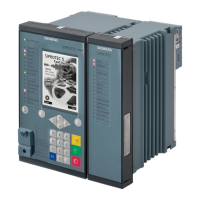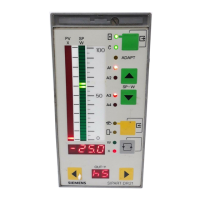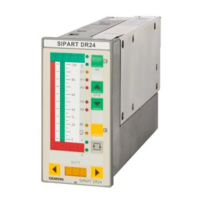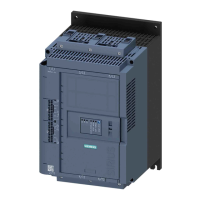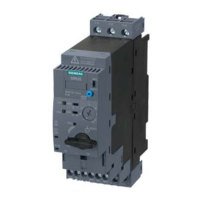Functions
2.9 Ground Fault Protection 50N(s), 51N(s)
SIPROTEC, 7SJ61, Manual
C53000-G1140-C210-1, Release date 02.2008
150
The pickup of the definite time overcurrent protection can be stabilized by the configurable dropout time 3121
50Ns T DROP-OUT. This time is started and maintains the pickup condition if the current falls below the thresh-
old. Therefore, the function does not drop out at high speed. The trip command delay time continues running.
After the dropout delay time has elapsed, the pickup is reported OFF and the trip delay time is reset unless the
threshold has been exceeded again. If the threshold is exceeded again during the dropout delay time, the time
is cancelled. The trip command delay time continues running. If the threshold value is exceeded after its expiry,
the trip command is issued immediately. If the threshold value is not exceeded at this time, there is no reaction.
If the threshold value is exceeded again after expiry of the trip-command delay time, while the dropout delay
time is still running, tripping occurs immediately.
2.9.3 Setting Notes
General Settings
The operating mode of the protective function is configured at address 131 Sens. Gnd Fault (see Section
2.1.1). If address Sens. Gnd Fault = Definite Time, then only the settings for the definite-time elements
are available. If the setting is Sens. Gnd Fault = Log. inverse A, a logarithmic inverse characteristic is
available. If the setting is Sens. Gnd Fault = Log. Inverse B, a logarithmic inverse characteristic with
knee point is active. Alternatively, user-defined characteristic can be used when setting Sens. Gnd Fault =
User Defined PU. The superimposed high-set element 50Ns-2 is available in all these cases. If the function
is not required, Disabled is set.
Sensitive ground fault detection may be switched ON or OFF or to Alarm Only in address 3101 Sens. Gnd
Fault. If sensitive ground fault protection is switched ON, both tripping and message reporting is possible.
A two-stage current/time characteristic may be set at addresses 3113 through 3120. These elements operate
with the ground current magnitude. They only make sense where the magnitude of the ground current can be
used to specify the ground fault. This may be the case on grounded systems (solid or low-resistant) or on elec-
trical machines which are directly connected to the busbar of an ungrounded power system, when in case of a
network ground fault the machine supplies only a negligible ground fault current across the measurement lo-
cation, which must be situated between the machine terminals and the network, whereas in case of a machine
ground fault the total ground fault current produced by the total network is available.
50Ns–2 Element (Definite Time)
Similar to the time overcurrent protection function the high set element is named 50Ns-2 PICKUP (address
3113). It is delayed with 50Ns-2 DELAY (address 3114) and may be set to generate a message or to trip. The
latter is only possible if address 3101 Sens. Gnd Fault is set to ON.
50Ns–1 Element (Definite Time)
The definite tripping characteristic 50Ns-1 is set with addresses 3117 and 3118 (address 131 Sens. Gnd
Fault = Definite Time).
Pickup Stabilization (Definite Time)
Pickup of the definite time elements can be stabilized by means of a
configurable dropout time. This dropout
time is set in 3121 50Ns T DROP-OUT.
51Ns Element (Inverse Time)
The inverse tripping characteristic 51N-TOC is set with addresses 3119 and 3120 (address 131 Sens. Gnd
Fault = User Defined PU).
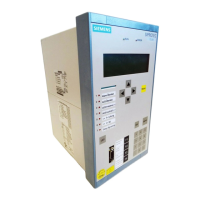
